Aboriginal people are one of two First Nations groups recognised in what is now known as ‘Australia’ (the other being Torres Strait Islanders).
Aboriginal people belong to Mobs (tribes) and within those are Clans (family groups). There are over 250 Mobs in Australia and even more Clans (some Mobs have upwards of 7 clans). Most Aboriginal people will have a ‘moiety,’ ‘totem’ or ‘spirit protector’ and usually an individual will have more than one – tribal, gender, family, personal.
All Mobs have their own ‘Country’ with boundaries that are typically marked on trees and by natural landscapes such as a river being a boundary between two neighbouring tribes or clans.
To learn more about individual Mobs head over to our Country Map here.

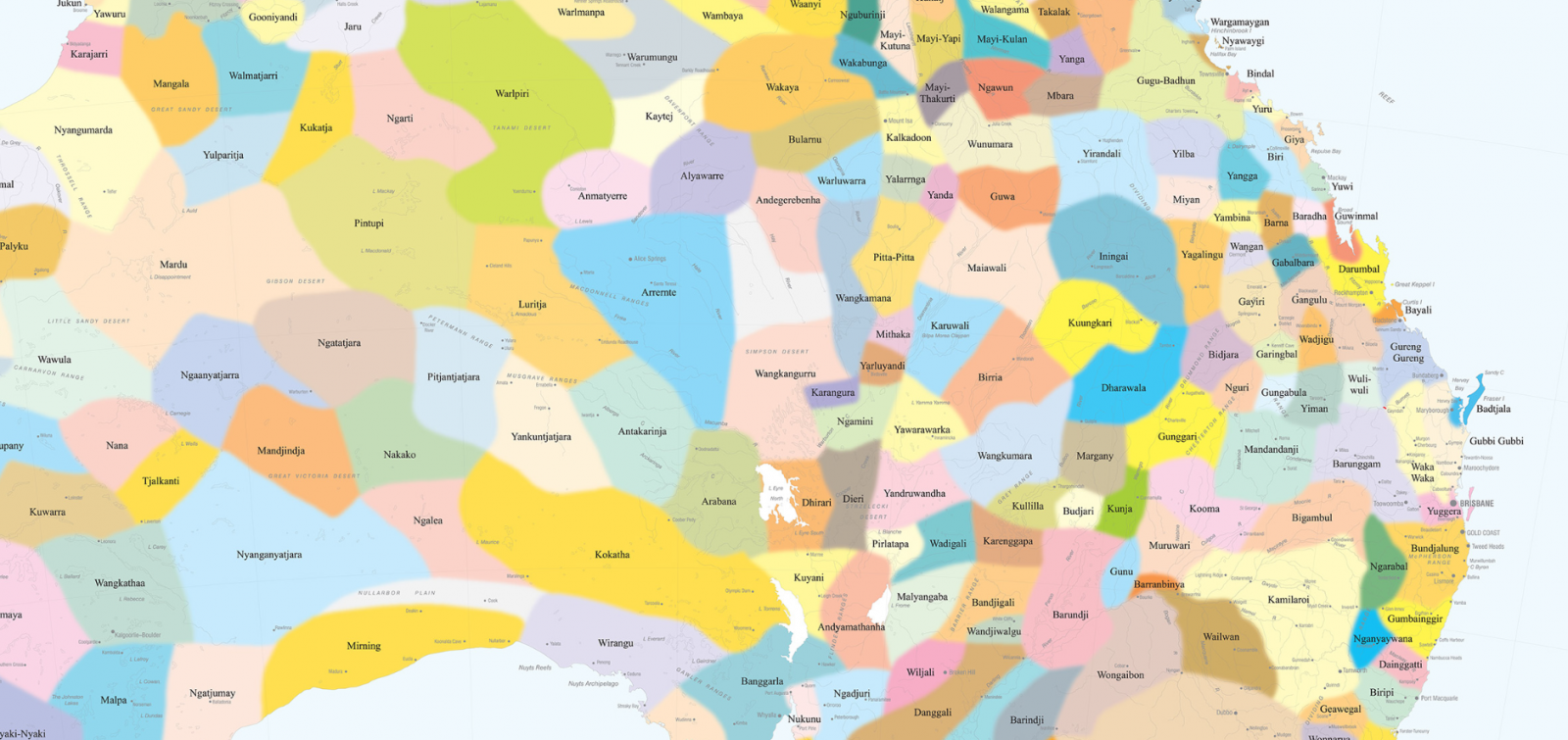
Map of Aboriginal Nations & Language groups. Source: Australian Institute of Aboriginal and Torres Strait Islander Studies
Creation
Aboriginal people believe in the Dreaming. The Dreaming refers to the ‘Spirit World’ that accompanies our physical one and each Mob has a word or description for the Dreaming.
The Dreaming is the basis for all the beliefs and Lore that we as Aboriginal people chose to live our lives by. It is believed that our Creator Spirits and Ancestors reside there and that we too will eventually go there when we pass away.
The Dreaming also signifies the time when our Ancestral and Creator Spirits emerged from the land, the sea and the sky and began to form our Countries. In the beginning the land was flat and empty. There were no trees or mountains, no animals and no people. The landscape was changed as these Spirits lived out their lives. They left their imprint on the landscape. The rivers, mountains, rocks and lakes were all created during their travels.
When human life was created it is believed that the Ancestors and Creator Spirits returned to where they had originally come from so they could watch over their creations.
Just as some people believe that when you die you go to Heaven, for a lot of Mobs in Australia it is believed your spirit returns to the Dreaming when you die. There are also some who believe that when you go back to the Dreaming you are then reborn as an animal and, like the Spirits, you watch over your family as that animal.
Creation stories vary across all the different Mobs.
To learn more about the dreaming read our article The Dreaming here

Artwork by Emma Bamblett.
Culture
Flag
The Australian Aboriginal Flag is a flag that represents Aboriginal Australians. It is one of the official flags of Australia, and holds special legal and political status. It is often flown together with the national flag and with the Torres Strait Islander Flag, which is also an official flag of Australia. On the 14th of July 1995, the Governor General of Australia William Hayden proclaimed both the Aboriginal Flag and the Torres Strait Islander Flag to be 'Flags of Australia'.
The flag was created by artist and activist, Harold Thomas, a Luritja man from central Australia and a member of the Stolen Generation. He created the flag in response to the questions of personal and cultural identity.
The design of the Aboriginal flag comes with the following representations:
- The red represents the land which nourishes the people
- The yellow represents the life-giving sun
- The black represents the Aboriginal people of Australia and the pride that comes in being black.
There is some contention around the Aboriginal flag at the moment since WAM Clothing was given exclusive rights to reproduce the Aboriginal flag on clothing by Harold Thomas.
Since acquiring the exclusive clothing licence for the flag, WAM Clothing has reportedly sent several “cease and desist” notices to Aboriginal-owned businesses that use the flag on clothes, along with the AFL, which uses images of the flag on club jerseys for Indigenous round.
Language
Language is not just about how we communicate but is a vital part of who we are as Aboriginal people.
Language expresses our culture, our world view, our knowledge and our identity. Every Mob has their own individual language with many different dialects. There is huge richness and diversity in Aboriginal languages.
Many languages have been lost or are ‘sleeping’ due to colonisation and the history of punishment when practising culture. However many people are working hard to reawaken their languages and teach them to the younger generation.
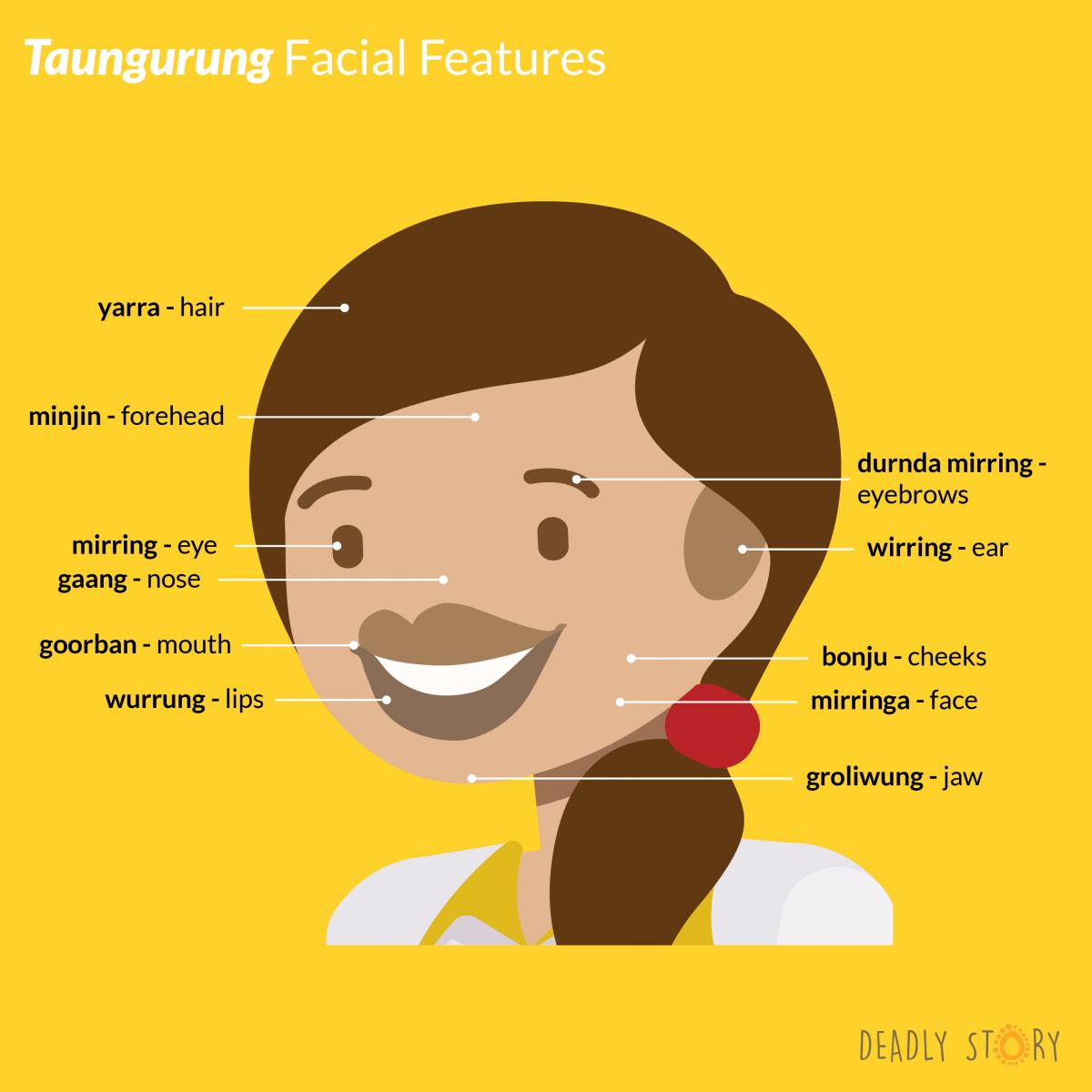
Taungurung facial features. Created with permission from the Taungurung Land and Waters Council.
Ceremony
There are many ceremonies that are apart of Aboriginal culture. Before colonisation, there were general gatherings between neighbouring Mobs, where they would trade, discuss marriages and more. There were also ceremonies for when young children came of age or when someone passed away.
Ceremonies are very sacred. There were some that were for the whole Mob and some that were for just men or women such as a coming of age (men's business/women’s business). Many Mobs are reviving ceremonies that colonisers had previously suppressed.
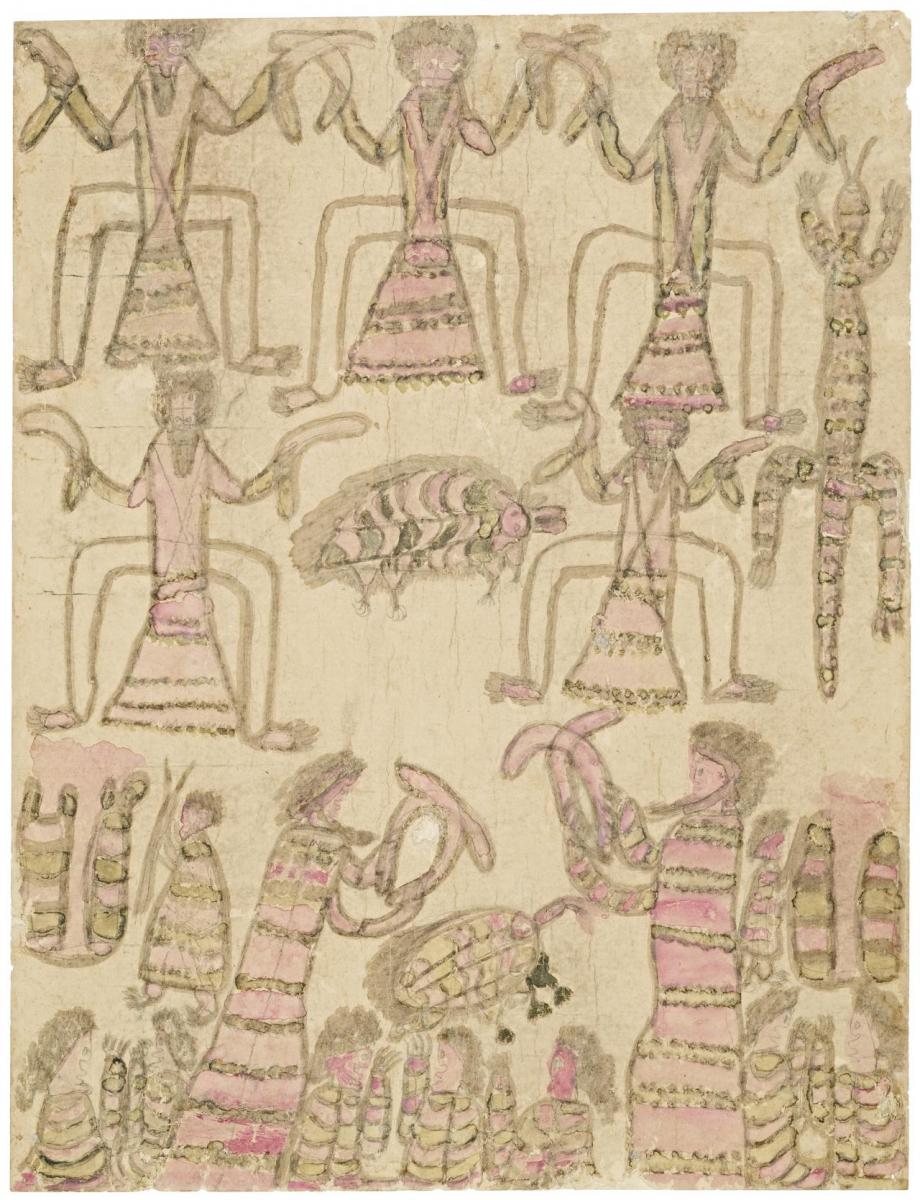
Ceremony (1890s) William Barak - Wurundjeri dancers perform songs and dances. Watched by Community wearing possum-skin cloaks (bottom half of image). Animals present include echidna, platypus and goanna. Two campfires burn on the left and right. Source: NGV Online collection
Ochre & Dance
As part of these ceremonies individuals ‘paint up’ with ochre. Everyone typically has individual or family styles and patterns that no one else is allowed to copy and these signify their story and their standing. If it's for a dance designs often replicate that of the story being told.
Dance is also a big part of our culture. Aboriginal people have always been story tellers, and we are largely an oral culture, as pre-colonisation we didn’t typically write anything down. Our history, creation stories, Lore and practices were largely passed down through stories, art and through dance and song. We had dances that represented the creation of animals, the creation of people, wars and marriages.
Our dances have evolved through colonisation and many Mobs are bringing back and creating traditional dances to show the rich history of our culture.

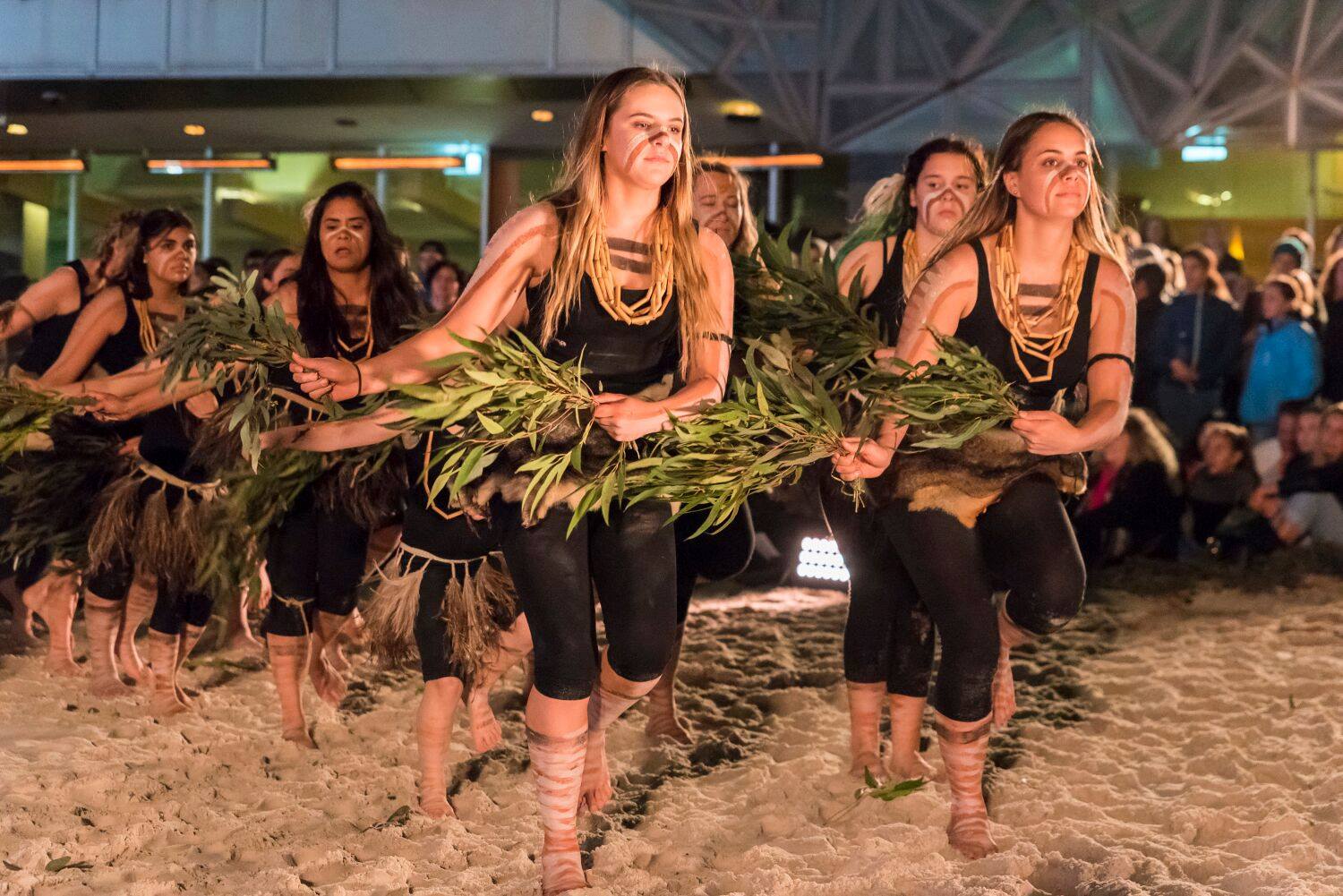
The women of the Djirri Djirri dance group keep culture alive by 'painting-up' in ochre and singing in the Woiwurrung language, songs of Creator Spirits, County & Ancestors. Source: Djirri Djirri Facebook page
Colonial history
Aboriginal people in Victoria and across Australia have survived huge injustices and continue to stand strong today. Since the beginning of colonisation in 1788, we have resisted and fought to protect our people, Country and culture. While we have faced violence, loss, discrimination and racism, our survival shows the strength of our people and our culture.
Colonisation began with the invasion of our Country in 1788. 11 ships from Great Britain arrived in what is now known as Botany Bay, New South Wales to begin a penal (prison) colony.
When the British invaded Australia from 1788 onwards, they started what’s known as a settler colony. This means that the British came to stay and create their own society by stealing the lands of Aboriginal and Torres Strait Islander people. The foundation of Australia, including its laws and customs were created during these colonial times and many of them are still in place today
In the early days of colonisation many Aboriginal warriors fought to protect people and Country. One example was Pemulwuy, a Bidjigal man of the Eora nation who fought against the theft of his people’s land and atrocities committed against Aboriginal people, often by burning crops and raiding food stores.
In ‘Victoria’, Gunditjmara people were known as the ‘Fighting Gunditjmara’ in the 1800s because of their strong resistance to violence and invasion of their Country.
Later on, we formed organisations and cooperatives to bring Community together and fight for Aboriginal rights such as the Australian Aboriginal Progress Association founded in 1925, Aborigines Progressive Organisation founded in 1937, Aborigines Advancement League founded in 1957 and the Federal Council for the Advancement of Aborigines and Torres Strait Islanders founded in 1958. These organisations all fought for human, cultural and land rights for Aboriginal people.
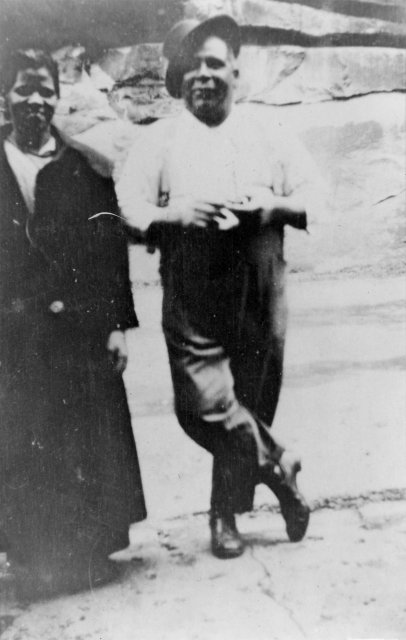
Uncle Fred Maynard and his sister at the Rocks, 1927. He was one of the founding members of the Australian Aboriginal Progress Association. Image Source: A history of Aboriginal Sydney
Today there are many people and organisations who work tirelessly to make change for Aboriginal people. They are seeking to change laws, policies and Community attitudes so our mob can achieve and thrive. For example, the Secretariat of National Aboriginal and Islander Child Care (SNAICC) lead the Family Matters campaign. This campaign aims to stop the over-representation of Aboriginal children in out-of-home care and make sure our “children and young people grow up safe and cared for in family, community and culture.”
The invasion marked the beginning of a very dark period for Aboriginal people. There were many horrendous massacres, loss of culture, families were torn apart and our lives were changed forever. However we were warriors and despite it all we survived.
If you would like to learn more about our resistance you can read the Standing Strong article here and our history timeline here.
Keeping culture alive
Today aboriginal people make up 3% of Australia’s population, despite this small number we are working hard to keep our culture alive and strong.
There are many programs for young people to learn their history and their culture, dance groups are constantly forming and gaining traction by dancing at big events for the whole country to see. Welcomes and acknowledgements are becoming common practice and the education of the non-Indigenous community about Indigenous people, history and issues is growing.
We are slowly moving towards reconciliation between Aboriginal and non-Aboriginal people in this country.


Deborah Mailman (Bidjara and Māori - Ngati Porou and Te Arawa) was the first Aboriginal actress to win the Australian Film Institute Award for Best Actress in a Leading Role for the 1998 film 'Radiance'. Image source: Screen Australia
Leaders
Adam Goodes (1980 - )
Adam Goodes is a proud Adnyamathanha and Narungga man and a former professional footballer who played for the Sydney Swans in the AFL. He was a highly successful player, winning 2 Brownlow medals and playing in 2 premiership sides.
In 2013, while playing during the AFL's annual Indigenous round, Adam Goodes was called an ape by 13-year old opposition supporter. Goodes pointed out this racism and following the game called on the community to support the girl instead of blame her believing she was a product of her environment. Following this he was subjected to sustained booing. Due to the stress experienced by this racist treatment he resigned in 2015.
He is a vocal leader and role model in his Community, doing a range of work with young people and the Aboriginal Community, as well as contributing to campaigns about family violence and mental health. He famously stood up to racism and was recognised for his leadership in football and the community by being awarded Australian of the Year in 2014. Two documentaries, 'the Final Quarter' and 'The Australian Dream' were released about his experiences in 2019.
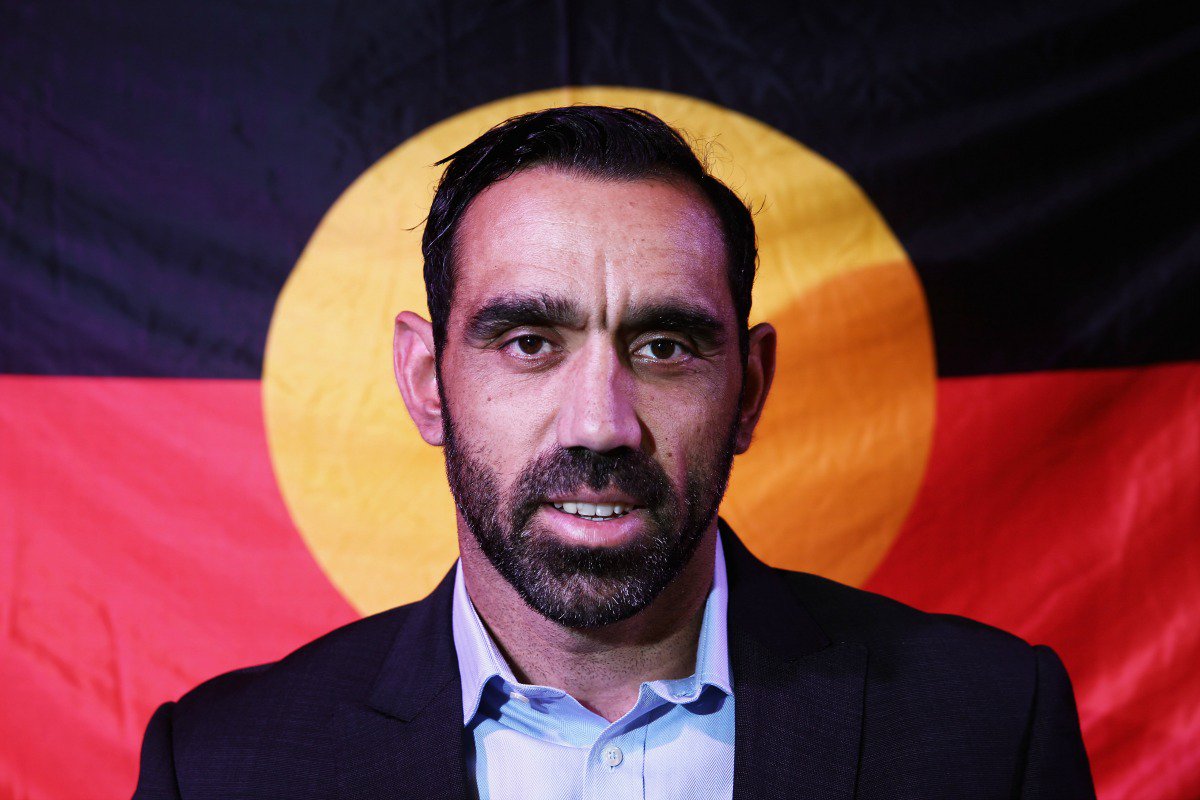
Adam Goodes. Image Source: Mamamia
Deborah Mailman (1972 - )
Deborah Mailman is a proud Bidjara and Māori (Ngāti Porou and Te Arawa) actress and singer. She is originally from Mount Isa in North-West Queensland. She has had a range of important film roles including in Radiance, Rabbit Proof Fence, Bran Nue Dae and the Sapphires. She has also starred in TV series including The Secret Life of Us, Redfern Now, Celeverman and more.
She was the first Aboriginal actress to win the Australian Film Institute Award for Best Actress in a Leading Role.
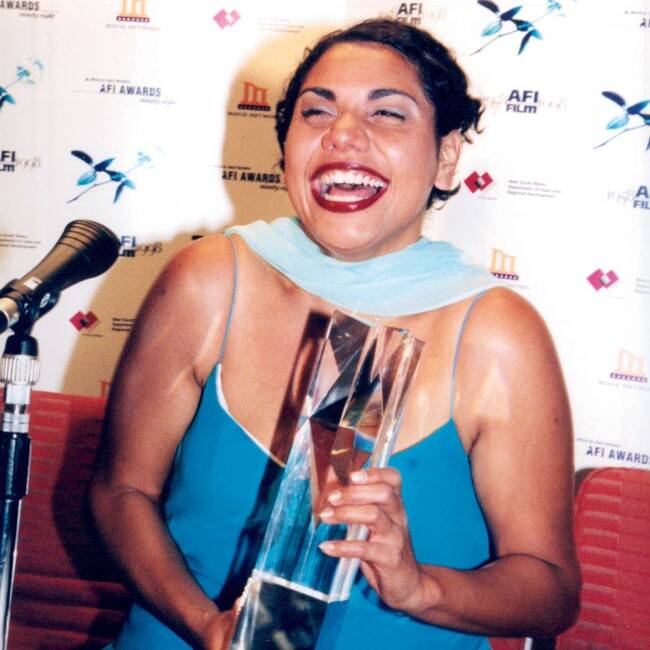
Deborah Mailman after winning Best Lead Actress for Radiance (1998). Image Source: ENews
Pemulwuy (1750 – 1802)
Pemulwuy was a Bidjigal man whose land covered what is now known as Botany Bay, Sydney. Two years after the arrival of the First Fleet beginning the invasion and colonisation of Australia, Pemulwuy began to resist the incursion of white settlers onto his people’s land.
With the growing attacks on his people’s rights, Pemulwuy led a series of raids from 1792, the first of which was at Prospect in May 1792.
Pemulwuy is remembered as a brave and independent man who inspired others, fought hard and died for his land and his people.
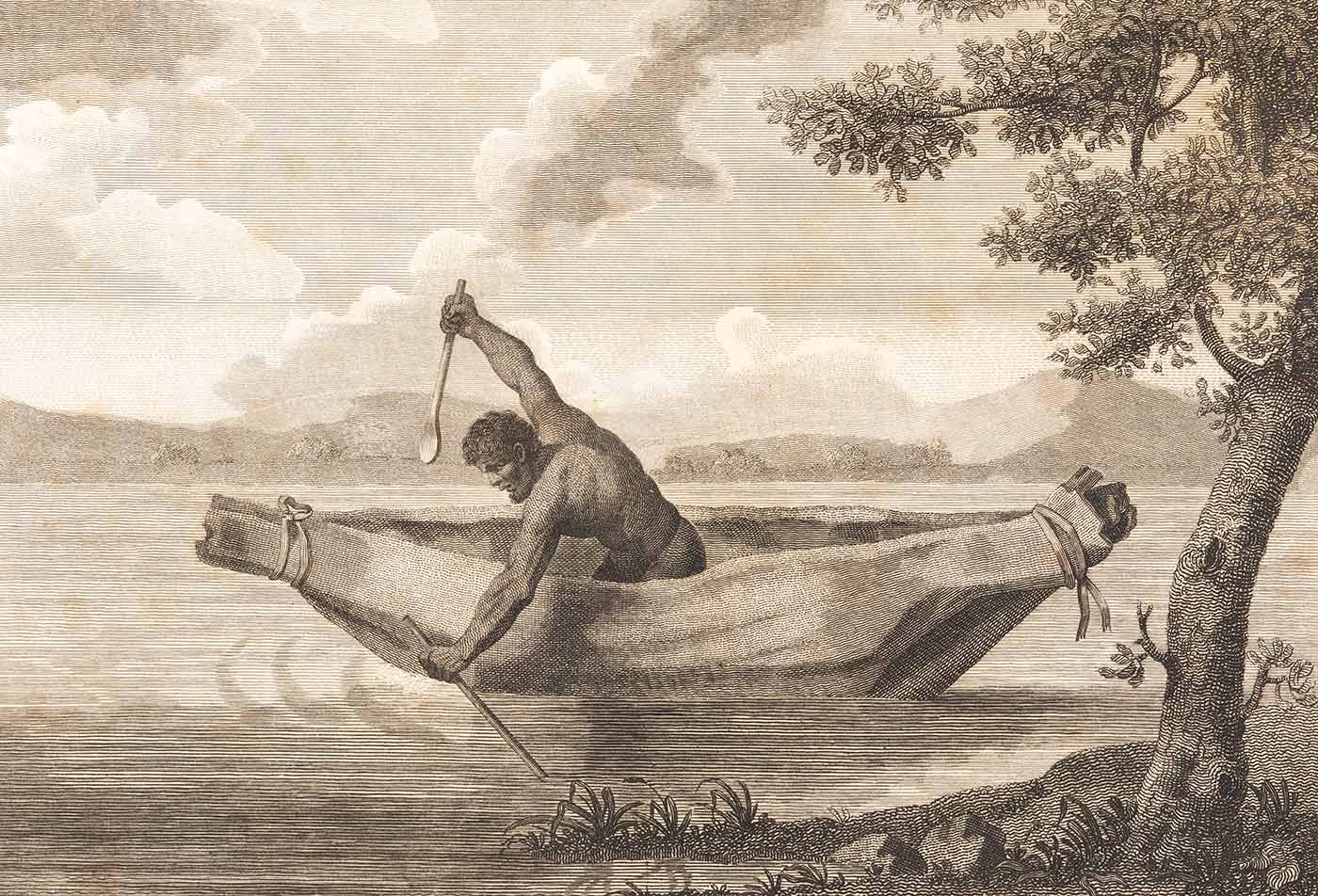
Image Source: National Museum Australia
Truganini (1812–1876)
Truganini (Trugernanner, Trukanini, Trucanini) was the daughter of Mangana, headman of a band of the south-east Tasmanian Aboriginal people.
By 1829, her entire family had been murdered of captured by colonisers. That year she met colonial representative George Augustus Robinson on Bruny Island mission. Between 1830 and 1835 she accompanied Robinson on his travels, teaching him about her people, language and customs. In this role, she was seeking to protect and promote the interests of her peoples who had been so devastated by the brutal invasion, war and genocide that occurred in Tasmania.
In 1847 she went to Oyster Cove where she sought to return to her earlier lifestyle as best she could. In 1874 she moved to Hobart, where she later passed away.
Truganini was concerned that after her death her body would be used by 'scientists' and put on for show, which sadly occured in the Tasmanian Museum until 1951.
In 1976, a century after Truganini died, the Tasmanian Aboriginal Community requested that Truganini be cremated and scattered in the D'Entrecasteaux Channel near her homeland. The ceremony was a moving and significant occasion which encouraged Tasmanians to recognise the ongoing existence, rights and cultural responsibilities of Tasmanian Aboriginal people.
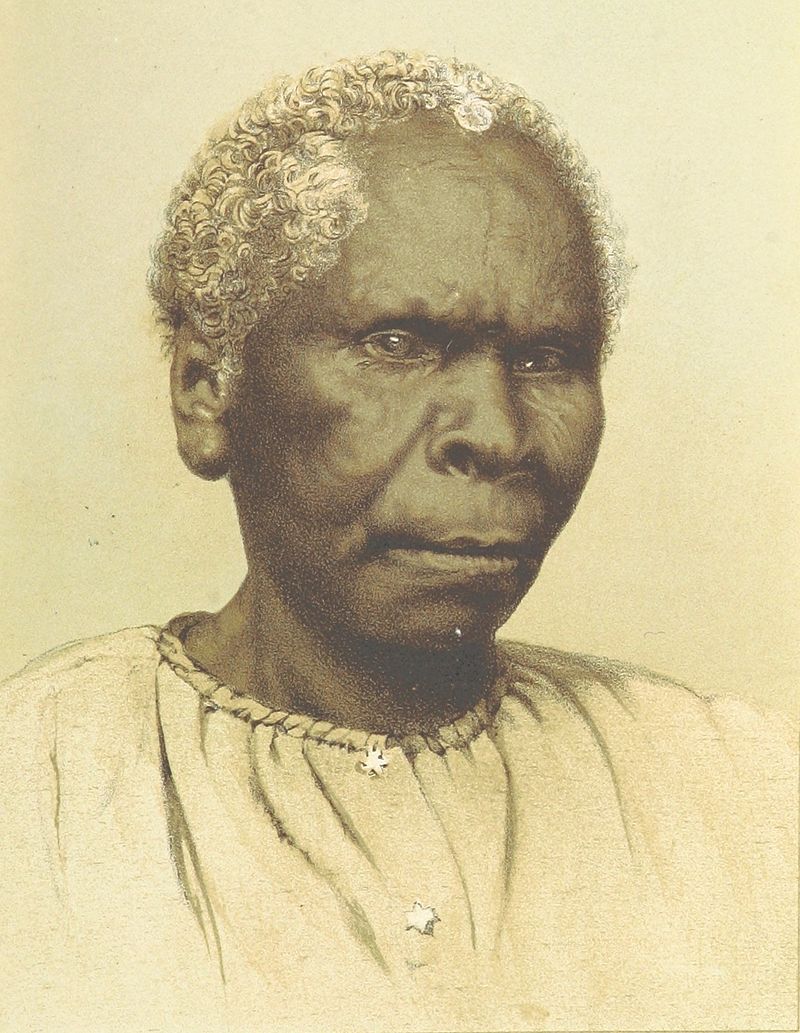
Image Source: Truganini Wikipedia
For additional resources check out our main website deadlystory.com
Sources used in writing this article:
- Victorian Aboriginal Corporation for Languages
- Deadly Story
- Adam Goodes, Australian of the Year Awards
- Deborah Mailman, Screen Australia
- Deborah Mailman, National Portrait Gallery
- Pemulwuy, National Museum of Australia
- Trugernnaner, Australian Dictionary of Biography
